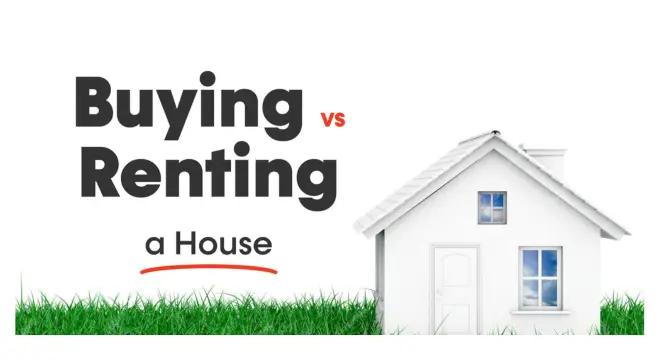New Report Reveals the U.S. Housing Markets Heating Up—and Cooling Down—the Fastest
If you’ve been watching the U.S. housing market lately, you’ve probably noticed something that doesn’t match the headlines from just a couple of years ago. The vertiginous home price growth that defined the pandemic years has started to slow, and in some regions, it’s even reversed.
I’ve been tracking these shifts closely, and what’s happening now is a story about more than just numbers—it’s about people, decisions, and real consequences for homeowners, buyers, and investors alike.
Nationwide, home prices in September were only 1.2% higher than a year earlier, according to a study by property intelligence platform Cotality. That might not sound dramatic until you realize how far prices skyrocketed during the pandemic.
Month-over-month, they actually dipped by 0.2%, signaling that the market isn’t just slowing—it’s adjusting. Rising mortgage rates, higher property taxes, and growing insurance premiums have pushed many potential buyers to the sidelines. The result? Inventory is climbing to levels not seen since 2019, and that alone is reshaping how fast—or slow—homes are moving.
What’s fascinating here is how uneven the landscape has become. Some markets are still holding strong, while others that boomed during the pandemic are now cooling quickly. Understanding this national picture is crucial because it frames every decision you might make, whether you’re thinking of buying, selling, or investing. And if you’re like me, you want to know where the opportunities are—and where the risks lie—before you take any steps.
Why Florida and Washington D.C. Are Leading the Price Declines?

If you’ve been following U.S. housing headlines, you might have seen reports highlighting Florida and Washington D.C. as the hottest “cooling” markets. According to a recent Newsweek study, these areas experienced the largest year-over-year home price drops in September. That’s not just a number—it’s a signal that these overheated markets are finally adjusting after the pandemic frenzy.
Florida, in particular, saw a perfect storm: pandemic-era construction booms created an inventory surge, while demand has slowed because rising mortgage rates, taxes, and insurance costs are keeping many buyers out. Places like Cape Coral, Naples, and Punta Gorda are feeling the pinch the hardest. In D.C., a combination of higher costs and cautious buyers is tempering the once-hot market.
What’s striking here is how this affects real people. If you own property in these areas, you’re likely noticing slower sales or even drops in equity. For buyers, it might seem like a bargain, but it’s essential to understand why these declines are happening—markets without strong job growth or economic diversity struggle to sustain higher prices. Newsweek captures this well, highlighting the contrast between Florida’s cooling markets and the more resilient Northeast metros.
Practical takeaway: If you’re invested in Florida or D.C., consider monitoring market trends carefully. Equity could erode quickly, but if you’re a cautious buyer, slower markets might offer strategic entry points.
Nationwide Overview — Slower Growth and Rising Inventory
Looking at the bigger picture, the U.S. housing market is no longer the fast-moving machine it was during the pandemic. Nationwide, home prices grew only 1.2% year-over-year in September, with a slight month-to-month decline of 0.2% (Cotality). That’s a significant slowdown compared to the double-digit gains seen just a few years ago.
The main reason? Inventory is rising. More homes are available now than in recent years, yet many buyers are hesitant. Higher mortgage rates, growing economic uncertainty, and rising ownership costs are making people more cautious. Essentially, the market is reaching a point of equilibrium: prices can’t keep climbing if demand can’t keep up.
This uneven environment means some metros still see growth, while others are cooling fast. About 20% of U.S. metropolitan areas recorded annual price drops in September. That’s a huge shift from the pandemic era when nearly every market was booming. For you, this is critical information whether you’re planning to buy, sell, or invest: understanding the national rhythm will help you navigate local opportunities wisely.
Essentially, the market is reaching a point of equilibrium: prices can’t keep climbing if demand can’t keep up. For a closer look at how buyers are taking advantage of lower mortgage rates, check out our analysis on US home sales jump in October.
Practical takeaway: Don’t just follow local trends blindly. Look at nationwide indicators like inventory, interest rates, and regional demand—these factors will directly affect your decisions.
Top 10 Coolest & Hottest Markets
The numbers get even more interesting when you look at the extremes. In September, the coolest markets—mostly in Florida—include Cape Coral, Naples, Punta Gorda, Sebring, North Port, Brownsville (Texas), and a few others. These are the places where homeowners are seeing property values decline the fastest.
On the flip side, the hottest markets are concentrated in the Northeast and Midwest. Muskegon (Michigan), Parkersburg (West Virginia), Youngstown (Indiana), Lima (Ohio), and Pittsfield (Massachusetts) are among the areas still experiencing price growth. The common thread? Strong local economies, diverse job markets, and steady demand.
This contrast is a powerful reminder that not all cooling or growth is created equal. Just because prices are falling in one state doesn’t mean the national trend is weak, and vice versa. For buyers and investors, these extremes highlight where you might find bargains—or where you should tread carefully.
Just because prices are falling in one state doesn’t mean the national trend is weak, and vice versa. Our detailed coverage of US housing market declines and half of homes losing value shows similar patterns across different metros.
Practical takeaway: Track metro-level data. Cooling markets might offer entry points but come with risk; hottest markets may have stability but higher costs. Balance risk and opportunity carefully.
Regional Drivers — Why Some Markets Resist Declines

Why are some regions still holding strong despite the broader slowdown? I’ve noticed a clear pattern: areas with diversified job markets and strong income stability weather declines better. Cotality’s Chief Economist, Dr. Selma Hepp, points out that major Northeastern metros like Boston, New York, and Philadelphia remain resilient thanks to sectors like finance, biotech, healthcare, and education.
These markets also benefit from nearby mid-sized metros, which are attracting hybrid workers seeking better value without leaving high-income jobs behind. That keeps demand high even when costs rise. In short, strong local economies, income stability, and commuter-friendly alternatives are creating a buffer against nationwide slowdowns.
Practical takeaway: When evaluating a market, look beyond just home prices. Jobs, local economy, and accessibility are stronger indicators of stability than a single monthly price report.
Homeowner Impact — Equity Erosion & Rising Costs
Slowing markets aren’t just numbers on a spreadsheet—they directly affect homeowners. In Florida and other cooling regions, equity is eroding quickly. On top of that, escrow costs have risen an average of 45% compared to five years ago, pushing monthly payments past affordability thresholds. Homes are staying on the market longer, and closing deals is taking more effort.
Mortgage delinquencies are also starting to rise in some areas, signaling financial strain. Even for buyers, affordability remains a challenge: Cotality reports that 75% of the top 100 U.S. housing markets are still considered overvalued. That means even as some markets cool, the cost to buy a home remains significant for most people.
For daily housing market insights and quick updates directly on your phone, many readers find following a dedicated WhatsApp channel helpful—especially for catching sudden shifts in inventory or local trends.
Practical takeaway: If you own a home in a cooling market, be mindful of equity trends and rising costs. If you’re buying, don’t assume declining prices automatically mean affordability—you’ll need a clear financial plan to navigate these shifts.
Investment Opportunities and Risks
Now, let’s talk about where you might see opportunities—or pitfalls—if you’re thinking about investing. Cooling markets like Florida can feel tempting because prices are dropping, but there’s a catch. Many of these areas rely heavily on tourism and retirement communities, meaning job growth is limited and long-term demand may remain soft. Jumping in without understanding that could leave you stuck with an underperforming property.
On the other hand, the hottest markets—mostly in the Northeast and Midwest—offer more stability. Places like Muskegon, Parkersburg, and Youngstown are seeing steady demand thanks to diverse job markets and affordable housing compared to major metros. These areas may not give the thrill of a fast flip, but they can provide consistent returns if you’re thinking long-term.
For buyers, this means you need to weigh risk carefully. Are you in for short-term gains in a cooling market, or do you want long-term stability in a resilient metro? Financing also matters. Higher mortgage rates and growing ownership costs can eat into returns, so plan accordingly.
Strategic patience often pays off more than speed. If you want to see how sellers are returning to the market and what that means for buyers, take a look at our Housing Market Update.
Practical takeaway: Don’t chase falling prices blindly. Analyze the local economy, long-term demand, and financing costs before making a move. Strategic patience often pays off more than speed.
The Bigger Picture — Affordability and Market Overvaluation
Even as prices fall in certain markets, affordability is still a major issue. According to Cotality, 75% of the top 100 housing markets in the U.S. are still overvalued. That means most homes on the market are priced higher than what many buyers can realistically afford, despite slower growth in some regions.
Rising costs—mortgage rates, property taxes, insurance—compound the problem. For you, this isn’t just abstract data. If you’re buying, you might feel priced out even in a “cooling” market. If you’re selling, you may face slower offers and longer listing times. Understanding where affordability sits relative to local wages and inventory is key to making smart decisions.
This bigger picture also shows why national trends don’t tell the whole story. While some markets adjust quickly, others remain buoyed by strong economies, job stability, and commuter-friendly options. That’s why you need both a macro and local lens to navigate today’s housing landscape effectively.
Practical takeaway: Before buying or selling, evaluate affordability relative to income and local market conditions. Overvalued markets require extra caution, even if prices seem to be declining.
What Happens Next — Short-Term Outlook
So, what does all this mean for the next 12 to 24 months? In markets like Florida, cooling is likely to continue, and homeowners may see further equity erosion. For the Northeast and select Midwest metros, steady demand is expected to keep prices relatively stable, though growth may remain modest.
Mortgage rates and labor market strength will play an outsized role. Even small shifts in interest rates can influence buyer behavior and affordability. Meanwhile, inventory levels, especially in previously overheated markets, will determine how long homes stay on the market and how aggressive sellers need to be.
For you, staying informed is essential. Watch local trends, monitor rate changes, and keep an eye on employment data. The markets that recover fastest will likely combine strong economic fundamentals with stable housing supply. That’s where opportunities may lie, whether you’re buying, selling, or investing.
Practical takeaway: Keep an eye on macroeconomic indicators like interest rates and job growth. Plan for slow adjustments in cooling markets and measured growth in resilient metros. Knowledge and timing are your best allies.
For more in-depth housing market updates and expert insights, check out our Real Estate & Homeownership section.
Disclaimer: The information provided here is for educational and informational purposes only. Real estate markets are inherently unpredictable, and individual circumstances vary. Always consult a licensed professional before making buying, selling, or investment decisions.


